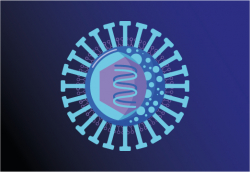We study viruses and we explore the creative strategies they use to maneuver their host cells. We are interested in deciphering the roles different viral elements are playing during infection, as well as how viruses interface with and commandeercellular pathways to control gene expression. We study these complex interactions using mainly cytomegalovirus (CMV), a herpesvirus that infects the majority of the world's population, leading to severe diseases in newborns and immunocompromised adults. We anticipate that our studies will uncover new aspects of virus-host interactions, as well as reveal new cell biology principles.





